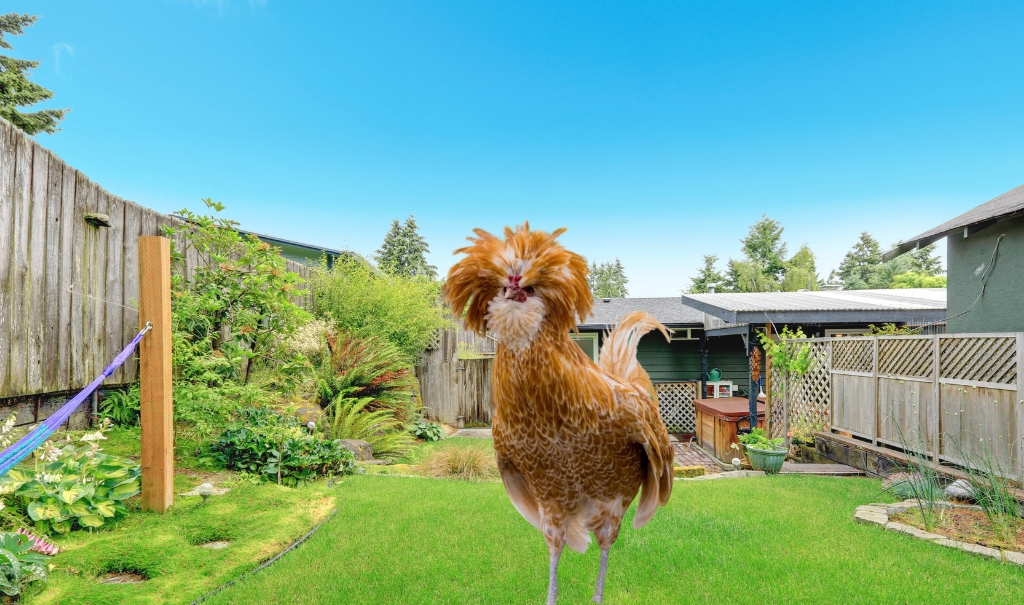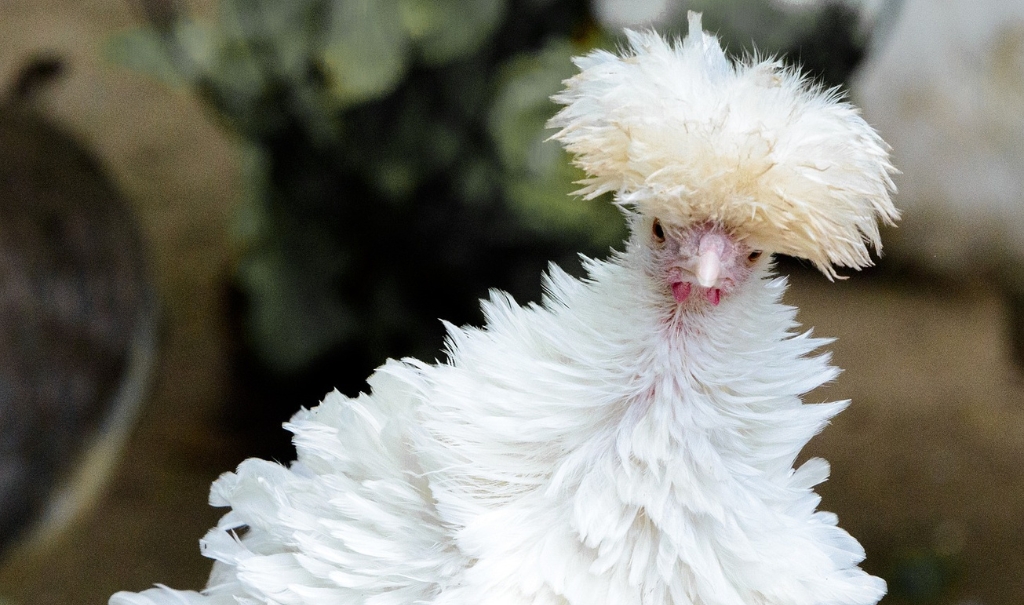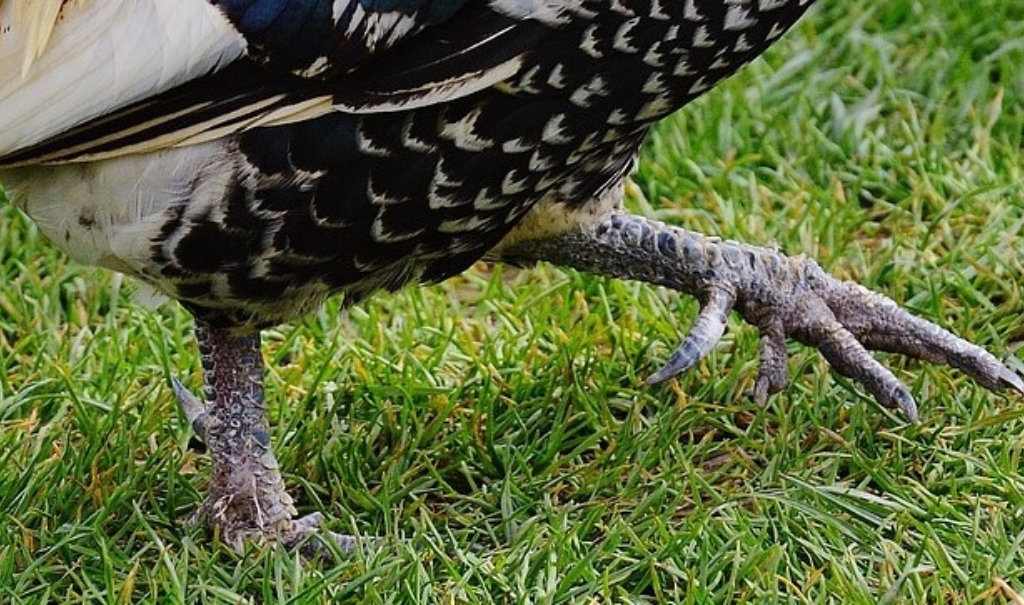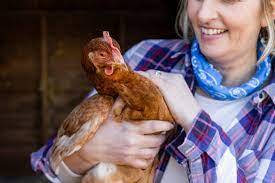Polish chickens are beautiful and are known for their shiny feather crests, which give them a serious and funny look. These birds are beautiful and interesting. Their past goes back to European nobility. Polish chickens add joy and charm to any group, whether you like them for their looks or because they are friendly.
In this article, we’ll explore everything there is to know about Polish chickens: history, characteristics, types, egg production, care, and more.

History
The Polish chicken, which is famous for its beautiful feathers, comes from Eastern Europe, though its exact roots are not clear. In the 1600s, it possibly came from Spain or Italy, but it became popular in Poland, where it was tamed and made better. Because they look so different, these birds had spread all over Europe by the 18th century.
Polish chickens were brought to America in the 1800s and quickly became popular as house pets. Even though they don’t lay the best eggs, their unique feathers and calm personality make them a favorite among chicken lovers all over the world.
Polish Chicken Overview
| Lifespan: | 5 to 8 year |
| Weight: | 2 to 2.75 kilograms (rooster), 1.6 to 2 kilograms (hen). |
| Colour: | Various. |
| Egg Production: | 180-200 per year |
| Egg Color: | White. |
Characteristics of the Polish Chicken
Distinctive Appearance
The first thing that makes this chicken unique is the big head on its wings, which gives them a full, crust-like look. This crust can get so big that it gets in the way of the bird’s view. Their feathers’ different colors and patterns make them a choice among people who like chickens for decoration.
Crested Head Feathers
The “top knot,” or crest, is the most noticeable thing about them. They look pretty and a little funny because of their sharp feathers. Polish chicken crusts come in a range of shapes and sizes, depending on the type of chicken.
Feather Patterns and Colors
Polish chickens are all shades of color, from black and white to gold. White-crested black, golden-laced, and silver-laced are some common colour types. These birds are really beautiful to look at.
Behaviour and Temperament
People usually like these chickens because they are calm and nice. They are interested birds that like to connect with the people who take care of them. They can be more shy than other types because their big crests can make it hard for them to see, so it’s important to be gentle when you approach them.
Calm and Friendly Nature
It is said that these chickens are very gentle. While they aren’t too mean and can do well in mixed groups, other chickens will sometimes try to steal them because of their pretty feathers.
Social Behavior in Flocks
When they are with their groups, Polish hens often get along very well. But because they can’t see very well, they can be more distant or easily spooked if you come too close.
How many types of Polish chicken are there?
There are three main types of these chickens: bearded, non-bearded, and bantam Polish chicken. Now we can describe these types:
Bearded Polish Chickens
Polish hens with beards look even bigger because they have an extra feather under their beaks. These birds have very fancy feathers that make them look very powerful.
Non-bearded Polish Chickens
Chicks in Poland without hair look clean and smooth because they don’t have any extra feathers on their faces. But they still have beautiful crests that make them easy to spot.
Bantam Polish Chickens
Bantam Polish chickens are a great choice for people who want a smaller version of this interesting breed. Bantams are small forms of the standard breed. They have all the same unique traits, but they are smaller.
Egg Laying and Productivity
Despite their glamorous appearance, Polish hens aren’t known for being highly productive layers.
Egg Production Levels
Polish hens lay an average of 180 to 200 eggs per year. They are not good layers. Their eggs are small to medium in size and white in color.
Are Polish Chickens Reliable Layers?
Polish hens are more of a decorative breed than a breed that can be used to lay eggs. They can still lay eggs, though, for people who keep them as pets in their yards.
How Does Their Egg-Laying Compare to Other Breeds?
Polish hens don’t lay as many eggs as Leghorns or Rhode Island Reds, known for laying large eggs. They work best for hobbyists who care more about how they look and how beautiful they are than how productive they are.

Caring for Polish Chickens
Feeding and Dietary Needs
Like other chickens, these chickens need a healthy diet of grains, nuts, and foods high in protein. Making sure your chickens can get clean water and good chicken food is important for keeping them healthy.
Housing Requirements
Polish chickens, with their crests, can be more vulnerable to the elements. It’s essential to provide them with a shelter that protects their feathers from getting wet and dirty.
Space and Coop Design for Crested Breeds
Poland chickens can’t see objects well because they’ve been hurt, so their coop needs to be built in a way that keeps them from getting hurt. Place perches low to the ground, leaving enough room between them so birds don’t get squished.
Health Considerations
Polish hens are usually tough, but their chicks can sometimes become where bugs or lice can live and grow. To make sure they stay healthy, they need to get regular check-ups and cleaning.
Polish Chicken Fun Facts
- Because their crests are so fancy, Polish chickens are sometimes called “top hat” chickens.
- Even though they have a Polish name, they are not always from Poland.
- Royal people in Europe used to love them, and many kept them as pets in parks.
What are the pros and cons of Polish chicken?
| Pros | Cons |
| Unique and striking appearance. | Vulnerable due to obstructed vision from crests. |
| Friendly and curious temperament. | Less hardy in cold weather. |
| Good egg layers (small white eggs). | Prone to predators. |
| It’s entertaining to watch. | It can be flighty and nervous. |
| Ideal for show birds. | Require special care for crests. |
Do Polish Chicken Hens Have Spurs?
People love Polish chickens because they look different from other types. Their feather crests make them stand out. It can be hard to tell if Polish chicken hens have spurs. Let’s get into this subject and look at the bodies of these interesting birds!
What are spurs?
Spurs are sharp, hard bumps that show up on the back of a chicken’s legs, mostly on roosters. They are used to defend, show who is in charge, and keep predators out of the group.
What are the differences between male and female spurs?
For defense and control, male chickens, especially roosters, have spurs that are bigger, sharper, and more developed. Hens, which are female chickens, don’t usually get spurs, and when they do, they are generally smaller, less noticeable, and not as sharp or useful as spurs on males.
When do Polish chicken hens get spurs?
Polish chicken hens don’t usually get spurs; roosters are more likely to do so. Some Polish hens, though, can get spurs that are too small or not fully formed because of their genes or hormones. Most of the time, these spurs are not as noticeable as roosters’ spurs, and they don’t cause any problems.
Why do some hens have spurs?
Spurs on hens are often caused by genetics and hormones. Some breeds of chicken, like Polish chickens, have genetic features that might sometimes cause hens to grow spurs. A hen with an excess of hormones or a lot of testosterone can also cause spur growth.

How do you tell if a Polish chicken has spurs?
It’s pretty simple to see if your Polish hen has spurs if you’re interested. When spurs first show up, they look like small button-like bumps on the back of the legs. If these bumps keep getting bigger, they might turn into sharp protrusions. If a hen does get spurs, they usually do so by the time they are a year old, but sometimes they can grow spurs later in life.
Are Spurs in Hens Harmful?
Most of the time, hens’ spurs are not dangerous. That said, if they get too long or sharp, they could hurt other chickens or the hen herself. In this case, it might be best to cut off the spurs to avoid any problems. Don’t worry, though; most hens with spurs will never have a real problem.
Preventing Injuries from Spurs
Watch how your hen acts to keep her from getting hurt. If she acts mean or if you see other birds getting scratched or cut, it might be time to cut her spurs. Making sure your chickens have enough room to run around can also stop them from being mean and prevent injuries from spurs.
What to Do if Your Polish Hen Has Spurs?
You shouldn’t be scared if you find out that your Polish hen has spurs. As was already said, spur growth in hens is generally not a problem. Getting help from a vet can give you peace of mind, and they can tell you if spur trimming is necessary.
Final Words
You can do more with a Polish chicken than just look at it. They make lovely, friendly, and fun additions to any group. They’ll bring joy to your backyard whether you like them for their unique looks or because they’re friendly.
FAQs
Are Polish chickens good pets?
Yes, Polish chickens are friendly and calm, making them great pets for families and hobbyists.
How long do Polish chickens live?
With proper care, Polish chickens can live up to 5 to 8 years.
Can Polish chickens tolerate cold weather?
While they can handle colder temperatures, their crests are prone to freezing, so it’s important to keep them dry and warm during the winter.
How often do Polish chickens lay eggs?
Polish chickens lay around 180-200 eggs annually, though they’re not known for high productivity.
Do Polish chickens require special care?
Yes, due to their crests, they need extra attention when it comes to grooming and protection from predators and harsh weather conditions.


